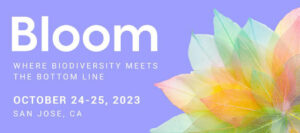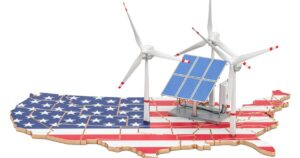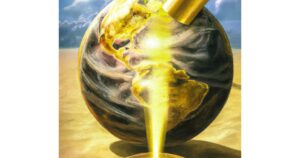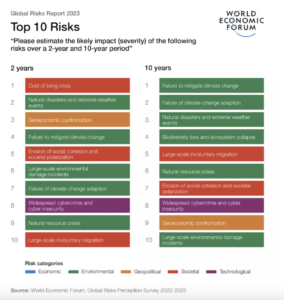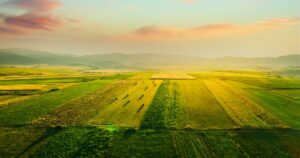
Demographic changes that are underway in America and elsewhere create not only the necessity for effective transition planning from one generation to the next, but will also produce a crisis of political and societal legitimacy if it does not occur.
This is especially true with the powerful emergence of Gen Z, whose priorities and values contrast significantly with those of currently empowered baby boomers, most of whom are in their 60s and 70s. The central decision facing the boomer generation is how to manage their transition off center stage while retaining roles of meaning and influence that take advantage of their significant experiences and skill sets.
GreenBiz and LinkedIn have, in recent weeks, represented important forums for exchanging views on these issues. Speaking for many in his demographic cohort, GreenBiz chairman and co-founder Joel Makower (who is 71) poignantly inquired, “What is our highest and best purpose in this moment? Should we continue to do what we’ve always done, or do the times demand that we show up differently?” Makower, a friend and colleague for more than 30 years, partially answered his own questions by relinquishing all management responsibilities at GreenBiz with none of the 80-plus employees any longer reporting to him. While he explores the larger question of “where best to intervene,” he examines emerging issues, mentors younger employees and continues writing.
More than five years ago (at age 66), after stepping down from nearly 12 years as president and CEO of the World Environment Center, I wrote a GreenBiz column titled “Master class: Why a career is a series of apprenticeships.” Reflecting on today’s rapidly changing professional and social expectations, I’ve updated my thinking to embrace a broader set of principles and practices for sustainability professionals. They include:
Career planning should seamlessly support legacy planning
By now, the process of transitioning away from a multidecade full-time career (“What do I want to do next?”) directly intersects with the question of personal legacy (“What have I done that is lasting and impactful?”). Both questions should be simultaneously evaluated to focus on core competencies, interests and values. Looking back on my portfolio, I purposely changed career paths on five separate occasions and held, over a 40-year period, senior executive positions at the Environmental Protection Agency, the petroleum industry, a major environmental consulting firm, the chemical sector and the nonprofit World Environment Center. This enabled me to participate in some of the most consequential public debates over that time — phasing out lead in gasoline, controlling smaller-sized particulate matter, assessing the risks of stratospheric ozone depletion, briefing oil industry CEOs on the science of climate change, and strengthening chemical industry security after 9/11. Legacy planning should not begin at the end of a career but, rather, at mid-career when there is experience, more mature judgment and ample time to weave the two together.
Disrupt yourself
This is the best professional advice I ever gave to myself. It enabled me to take control of my career, identify new learning opportunities, become less risk averse and exhibit adaptability across the range of organizations that employed me — public, private or nonprofit. Two central questions informed my disruption planning for over four decades: Am I still learning and making a difference at my present place of employment, or have I reached a period of diminishing returns of knowledge and impact? If the former circumstances prevailed, I remained as part of the organization. If the latter outcomes became more prominent, I began the search for an alternative career path (a process that sometimes took years to transact).
That search process was further informed by two additional factors: Have I stayed long enough to have made a significant difference? (I don’t believe it’s possible to achieve a major impact[s] in less than two to three years). And how will my next position set me up for the subsequent position after that? In other words, your career and legacy chessboard should be two moves ahead of where you are now. However, disrupting yourself may not require a departure from an existing employer, as many newer portfolio opportunities continue to emerge from an organization’s constantly changing needs.
Bear witness to what you know and have seen
A late-career sustainability professional has seen and experienced the good and the bad in any organization where he/she has worked. This creates many opportunities to plan future roles: mentoring; consulting; case study development; university lectures; opinion pieces; testimony in regulatory proceedings; or assisting non-government organizations in budgetary, scientific and policy analysis to keep business and government more accountable.
In my experience, bearing witness has taken several roles, including ones that I never anticipated. They include:
- Working with a team of former EPA officials to publish in 2021 the definitive history of the agency. With a colleague, I co-authored a chapter on the evolution and use of science across EPA’s 50-year history.
- Serving on a 2023 committee of the National Academy of Sciences, Engineering and Medicine to develop and communicate a new environmental policy framework based on advances in a variety of scientific disciplines.
- Being deposed in July as a central fact-based witness in the ongoing civil litigation of the Commonwealth of Massachusetts vs ExxonMobil. My testimony originated from my tenure as an American Petroleum Institute vice president, when I briefed numerous oil industry CEOs on the science of climate change in January 1989. I also retained numerous original source materials from that period that document senior-level deliberations across the industry on climate change.
Commit your interests and skills to outcomes larger than yourself
There is an ever-expanding range of opportunities for late-career sustainability professionals to contribute their time and talents. My membership in the EPA Alumni Association has enabled me to continue relationships with valued peers who themselves are dedicating their time to supporting EPA’s current initiatives and staff. Serving on the Advisory Board of the William K. Reilly Center for Environmental Policy at American University provides opportunities for periodic lectures and design of center reports and projects. Writing a monthly GreenBiz column creates the rigorous challenge of acquiring new knowledge on a range of topics and hopefully stimulating a broad audience of sustainability professionals to reflect upon their own points of view and actions they can take.
Many late-career priorities need not be limited to direct sustainability topics. As a person of Ukrainian heritage, I devote significant time to tracking progress of my ancestral homeland in preserving its freedom and independence. This has included 19 visits to Ukraine during the past 40 years and providing financial support to worthwhile causes.
Save some time to nurture yourself
My current professional commitments consume approximately 75 percent of my time. The remainder is devoted to extensive reading, personal wellness, cultural activities and maintaining close bonds with family and friends. This distribution of professional and personal time is flexible and will likely change as I get older and my personal needs, and those closest to me, become more prominent.
Every position I’ve ever held resulted from insights provided by my professional network. As environmental and sustainability professionals encounter late-career realities, now is the time to engage your own personal networks for information and to define opportunities for solving some major challenges. Planning your transition into later career and life is not a job for you alone.
- SEO Powered Content & PR Distribution. Get Amplified Today.
- PlatoData.Network Vertical Generative Ai. Empower Yourself. Access Here.
- PlatoAiStream. Web3 Intelligence. Knowledge Amplified. Access Here.
- PlatoESG. Carbon, CleanTech, Energy, Environment, Solar, Waste Management. Access Here.
- PlatoHealth. Biotech and Clinical Trials Intelligence. Access Here.
- Source: https://www.greenbiz.com/article/master-class-planning-your-transition-later-career-and-life
- :has
- :is
- :not
- :where
- $UP
- 12
- 19
- 2021
- 2023
- 30
- 40
- 66
- 75
- a
- Academy
- accountable
- Achieve
- acquiring
- across
- actions
- activities
- Additional
- advances
- ADvantage
- advice
- advisory
- advisory board
- After
- age
- agency
- ago
- ahead
- All
- alone
- also
- alternative
- always
- am
- Amazon
- america
- American
- an
- analysis
- and
- Anticipated
- any
- approximately
- ARE
- AS
- Assessing
- assisting
- Association
- At
- audience
- away
- Baby
- back
- Bad
- based
- BE
- became
- become
- began
- begin
- believe
- BEST
- board
- Bonds
- both
- Briefing
- broad
- broader
- business
- but
- by
- CAN
- Career
- case
- case study
- causes
- Center
- center stage
- central
- ceo
- CEOs
- chairman
- challenge
- challenges
- change
- changed
- Changes
- changing
- chemical
- circumstances
- civil
- class
- Climate
- Climate change
- Close
- Co-founder
- Cohort
- colleague
- commitments
- committee
- commonwealth
- communicate
- consequential
- constantly
- consulting
- consume
- continue
- continues
- contrast
- contribute
- control
- controlling
- Core
- create
- creates
- crisis
- cultural
- Current
- Currently
- debates
- decades
- decision
- define
- definitive
- Demand
- demographic
- Design
- develop
- Development
- difference
- diminishing
- direct
- directly
- disciplines
- Disruption
- distribution
- do
- document
- does
- done
- Dont
- down
- during
- Effective
- elsewhere
- embrace
- emerge
- emergence
- emerging
- employed
- employees
- employment
- empowered
- enabled
- encounter
- end
- engage
- Engineering
- enough
- Environment
- environmental
- Environmental policy
- Environmental Protection Agency
- EPA
- especially
- Ether (ETH)
- evaluated
- EVER
- evolution
- Examines
- exchanging
- executive
- exhibit
- existing
- expectations
- experience
- experienced
- Experiences
- explores
- extensive
- exxonmobil
- facing
- factors
- family
- financial
- Firm
- five
- flexible
- Focus
- For
- Former
- forums
- four
- Freedom
- friend
- friends
- from
- further
- future
- gasoline
- gave
- Gen
- Gen Z
- generation
- get
- good
- Government
- Have
- he
- Held
- heritage
- highest
- him
- his
- history
- homeland
- Hopefully
- How
- How To
- However
- HTTPS
- i
- identify
- if
- Impact
- impactful
- important
- in
- In other
- include
- included
- Including
- independence
- industry
- influence
- information
- informed
- initiatives
- insights
- Institute
- interests
- intervene
- into
- issues
- IT
- ITS
- January
- Job
- jpg
- July
- Keep
- Know
- knowledge
- larger
- lasting
- later
- lead
- learning
- lectures
- Legacy
- legitimacy
- less
- Life
- likely
- Limited
- Litigation
- Long
- longer
- looking
- made
- maintaining
- major
- Making
- manage
- management
- many
- massachusetts
- master
- materials
- Matter
- mature
- May..
- me
- meaning
- medicine
- membership
- mentoring
- mentors
- moment
- monthly
- more
- most
- moves
- my
- myself
- National
- nearly
- necessity
- Need
- needs
- network
- networks
- never
- New
- newer
- next
- None
- Nonprofit
- now
- numerous
- nurture
- occasions
- occur
- of
- off
- officials
- Oil
- older
- on
- ONE
- ones
- ongoing
- only
- Opinion
- opportunities
- or
- organization
- organizations
- original
- originated
- Other
- our
- out
- outcomes
- over
- own
- part
- participate
- past
- path
- peers
- percent
- period
- periodic
- person
- personal
- Petroleum
- pieces
- Place
- plan
- planning
- plato
- Plato Data Intelligence
- PlatoData
- points
- policy
- political
- portfolio
- position
- positions
- possible
- powerful
- practices
- present
- preserving
- president
- principles
- private
- Proceedings
- process
- produce
- professional
- professionals
- Progress
- projects
- prominent
- protection
- provided
- provides
- providing
- public
- publish
- purpose
- question
- Questions
- range
- rapidly
- rather
- reached
- Reading
- realities
- recent
- reflect
- reflecting
- regulatory
- Relationships
- remained
- Reporting
- Reports
- represented
- require
- responsibilities
- resulted
- retained
- retaining
- returns
- rigorous
- Risk
- risks
- roles
- s
- Science
- SCIENCES
- scientific
- seamlessly
- Search
- sector
- security
- seen
- senior
- separate
- Series
- serving
- set
- Sets
- several
- should
- show
- significant
- significantly
- simultaneously
- skill
- skills
- Social
- societal
- Solving
- some
- sometimes
- Source
- speaking
- Staff
- Stage
- stayed
- stepping
- Still
- strengthening
- Study
- subsequent
- support
- Supporting
- Sustainability
- Take
- taken
- talents
- team
- testimony
- than
- that
- The
- the world
- their
- themselves
- There.
- These
- they
- Thinking
- this
- those
- three
- time
- times
- titled
- to
- today’s
- together
- took
- Topics
- Tracking
- transact
- transition
- transitioning
- true
- two
- Ukraine
- Ukrainian
- Underway
- university
- updated
- upon
- use
- valued
- Values
- variety
- vice
- Vice President
- View
- views
- Visits
- vs
- want
- was
- we
- Weave
- Weeks
- Wellness
- What
- What is
- when
- while
- WHO
- whom
- whose
- why
- will
- william
- with
- witness
- words
- worked
- world
- worthwhile
- writing
- wrote
- years
- you
- Younger
- Your
- yourself
- zephyrnet

